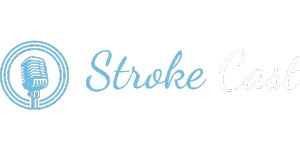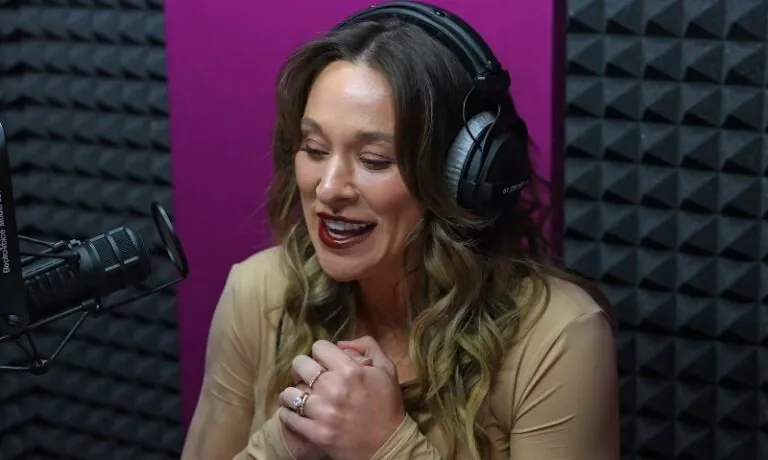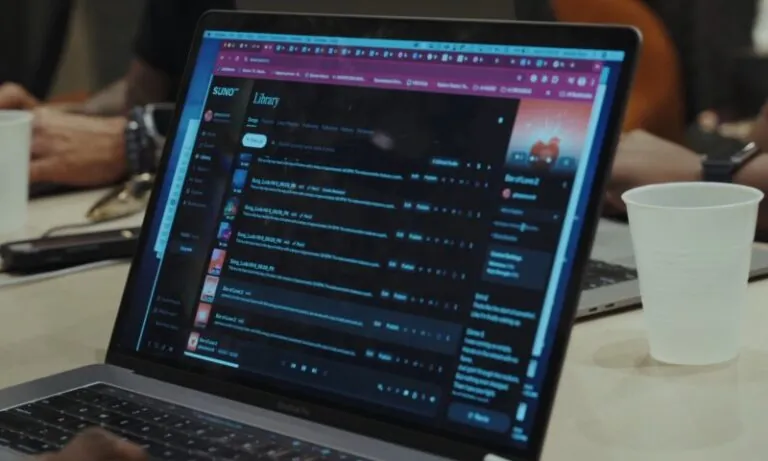Starting a podcast is exciting, no doubt. You’ve got something to say, and there’s a world out there ready to listen.
But turning a cool idea into a high-quality, widely-heard show? That takes a little more than plugging in a mic and hitting “record.”
As someone who’s seen firsthand how small changes can lead to big podcasting wins, I’ve pulled together a practical list of tools, habits, and strategies that’ll level up both the sound of your show and the size of your audience.
Let’s break it all down, piece by piece, and check out what actually works.
1. Know Your Listeners Inside Out

A show is far more compelling when it connects with people’s interests. Grasping the likes and dislikes of those who tune in paves the way for better topics, tighter pacing, and an overall stronger bond.
Demographics and Interests
Start by noting age groups, favorite social platforms, and typical daily challenges.
Maybe your audience is a group of tech enthusiasts looking for gadget reviews. Or possibly it’s made up of busy parents craving helpful lifestyle hacks.
Pain Points
People who follow true-crime stories? They’re probably seeking riveting mysteries. A business crowd?
They want practical strategies that help them stay competitive. Pinpointing those triggers helps shape content that feels spot-on.
Content Tailoring
Once the big-picture profile is clear, shape your episodes around what resonates. A show about productivity might involve quick tips, success stories, and short how-to segments.
Meanwhile, a comedy podcast could sprinkle in listener-submitted jokes or comedic skits to add variety.
2. Invest in Quality Equipment

Audio content hinges on sound clarity. Hisses or echoes are enough to drive people away fast. Upping your gear game is one of the most rewarding investments you can make.
Microphones
- USB Mics (e.g., Blue Yeti): Great for newcomers who don’t want to juggle fancy setups. Plug in, adjust a few knobs, and you’re ready to record. They’re simple yet effective.
- XLR Mics (e.g., Shure SM7B): More professional-level gear that offers sharper audio. You’ll need an audio interface, but the result is often worth the extra step. Many popular creators swear by XLR mics for that rich, warm tone.
Headphones
Closed-back models (like Audio-Technica ATH-M50x) keep audio from leaking into the mic. Plus, they offer accurate monitoring, so editing sessions become smoother.
Audio Interfaces
Options like the Focusrite Scarlett 2i2 take the analog signals from an XLR mic and convert them to digital. Audio quality often improves, plus gain control becomes more precise.
Accessories
- Pop Filters: Minimize “p” and “b” blasts that can distort recordings.
- Shock Mounts: Cut down on unwanted vibrations from desk movements or mic stands.
3. Plan and Structure Every Episode
No one wants to wade through rambling anecdotes. A solid outline can stop a show from feeling disorganized.
Scripting
- Bullet Points vs. Full Scripts: Some presenters thrive on fully written scripts, ensuring no point gets lost. Others do best with quick bullet points that keep the conversation natural. Experiment to see which approach feels right for your style.
Storytelling Elements
- Narrative Hooks: Jump into an intriguing tidbit right at the start. Maybe an anecdote about the day’s theme, or a quick snippet of an upcoming guest’s surprising viewpoint.
- Personal Connections: If you have a personal story that ties into the main topic, share it. That sense of authenticity draws people in.
Consistency
Release episodes at regular intervals—be it weekly, bi-weekly, or monthly. A predictable schedule builds anticipation. It’s almost like a mini-event on people’s calendars. They know when new content is coming, and they’ll be ready.
4. Utilize Editing and Recording Software
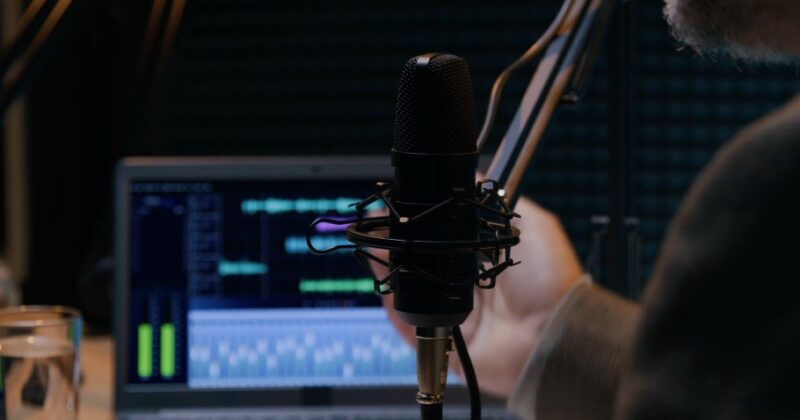
Nothing screams “professionalism” like well-polished audio. Post-production is a game-changer for removing awkward pauses, smoothing out volume levels, and adding a final coat of shine.
Editing Tools
- Audacity: Free, cross-platform, and surprisingly powerful. It’s user-friendly enough for beginners, but advanced options are there for pros.
- Adobe Audition: More robust. It integrates seamlessly with other Adobe products and offers multi-track editing, noise reduction, and a handful of high-level features.
Recording Platforms
- fm: Fantastic for remote interviews. It records each participant locally, then uploads high-quality audio and video, cutting down on the issues that can crop up with a spotty internet connection.
AI Enhancements
Adobe’s Enhanced Speech is one example of a tool that polishes audio automatically. Background hum vanishes. Voices gain clarity. AI isn’t magic, but it often removes minor distractions, saving editing hours in the process.
Additionally, using a VPN extension Chrome can help maintain secure connections during remote interviews, ensuring your data remains protected.
5. Expand Reach Through Smart Distribution and Promotion
Growing a podcast means making it available in the places potential listeners like to hang out. Once a show is up and running, consider a few key tactics for broader exposure.
Hosting Platforms
- Libsyn: Known for reliability and analytics. Great for creators who want detailed stats on downloads and traffic sources.
- Podbean: Another user-friendly option with straightforward plans, plus easy distribution to Apple Podcasts, Spotify, and more.
Show Notes and Metadata
- Keywords Matter: Craft appealing titles that hint at the episode’s topic. Include relevant terms in the description. That approach makes it easier for people to stumble upon your show in podcast directories or search engines.
- Compelling Summaries: Briefly outline the episode’s highlights. If a special guest joined, mention them. If there’s a juicy story, tease it.
Social Media Teasers
- Audiograms: Tools like Headliner let you create short, waveform-style clips. They catch the eye on platforms like Instagram or Twitter.
- Snippets: Pull a funny or insightful 30-second chunk from your show. Post it as a teaser. It’s often enough to pique curiosity and lure in fresh listeners.
6. Keep Tabs on Analytics and Gather Feedback
Ever wonder how your listeners respond to new segments or guest appearances? Evaluating the numbers can lead to meaningful improvements.
Metrics
- Downloads Per Episode: A good indicator of overall reach. Notice spikes or dips? That’s usually a sign something resonated—or flopped.
- Listener Demographics: Services like Podtrac provide breakdowns of who’s tuning in by region, device, and possibly age group. Patterns can guide your content strategy.
- Listening Duration: If people tune out after ten minutes, that might suggest pacing issues, topic misalignment, or subpar audio at certain spots.
Feedback Channels
- Reviews and Comments: Invite your audience to leave ratings on Apple Podcasts or Podchaser. Take constructive criticism seriously and let people know you appreciate the input.
- Direct Engagement: Ask for topic requests or host occasional Q&A sessions. Encourage questions through social media or email. Real interactions often deepen the relationship with your listenership.
7. Foster a Strong Community
A show can feel like a tight-knit group rather than a one-way broadcast. It just takes the right interactive elements and a willingness to highlight listener contributions.
Q&A Segments
Ask fans to submit voice notes or messages about your chosen theme. Air some of them. People love hearing their own voices in the content.
Guest Collaborations
Partner up with other creators, especially those who share a somewhat aligned audience. Cross-promotion often brings a fresh crowd over to your feed.
Bonus Content
Offer exclusive segments, behind-the-scenes clips, or even a short blooper reel. Rewarding dedicated listeners fosters a sense of gratitude and fun.
8. Consider a Simple Table for Gear Comparison
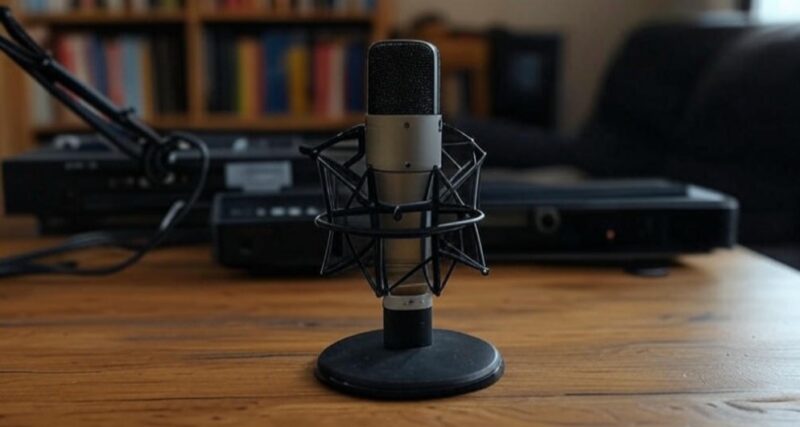
A quick chart might help compare a few popular items. Below is a bite-sized example, but feel free to expand based on your own research:
| Equipment | Best For | Estimated Price Range |
| Blue Yeti (USB) | Beginners, casual use | $100 – $130 |
| Shure SM7B (XLR) | Pro-level audio | $400 – $500 |
| Focusrite 2i2 | XLR mic interface | $150 – $200 |
| ATH-M50x Headphones | Monitoring | $150 – $170 |
9. Maintain Momentum Through Consistency and Authenticity
After all the gear is set up, the scripts are polished, and the episodes are released, it’s vital to stick to what sets your show apart. Authenticity is a magnet for audiences looking for genuine content.
Regular Output
Even if it’s just one episode every other week, maintain that rhythm. Listeners appreciate a predictable cycle.
Personal Touch
Slip in bits of your own journey, little mishaps during recording, or honest opinions on trending topics. Audiences often crave that relatable vibe.
Constant Improvement
Keep an ear out for new methods. Fresh editing tricks, interesting guests, or new segments can boost engagement. Growth doesn’t have to be drastic; tiny tweaks add up over time.
Final Thoughts
It’s easy to feel overwhelmed at the beginning. The good news is that every tiny step, from picking the right microphone to crafting attention-grabbing show notes, sets a strong foundation.
Those who find a way to enjoy the journey—celebrating small wins and embracing the learning curve—tend to stick around long enough to see real progress.
Keep experimenting, keep refining, and remember that a little personality goes a long way. A solid podcast is about more than polished sound waves; it’s about inviting people into a space where they feel engaged, informed, and maybe even a little uplifted.
Press record, release episodes, and watch the magic unfold. Your voice matters, and with the proper mix of strategy, creativity, and heart, it can reach ears far and wide.
Related Posts:
- Best 10 Podcast Microphones for 2025 - Elevate Your…
- How to Edit Your Podcast Like a Pro - Tips and Software
- Music Production Tips Every Beginner Should Know (No…
- Best Podcast Setup Tips for Sharp Video, Clean…
- 10 Fitness Tips from the Fresh and Fit Podcast -…
- How to Go Viral on YouTube - Tips That Actually Work
